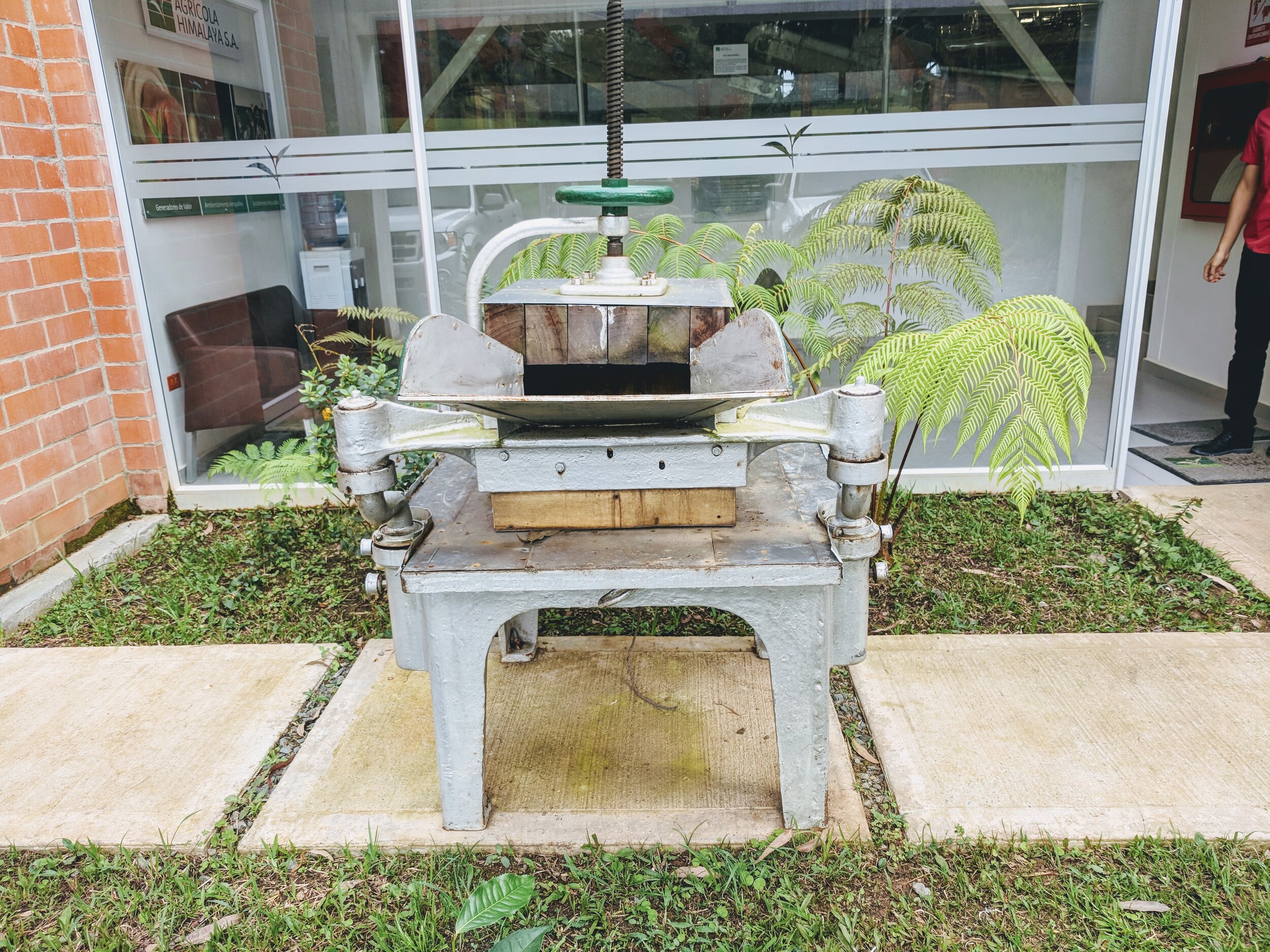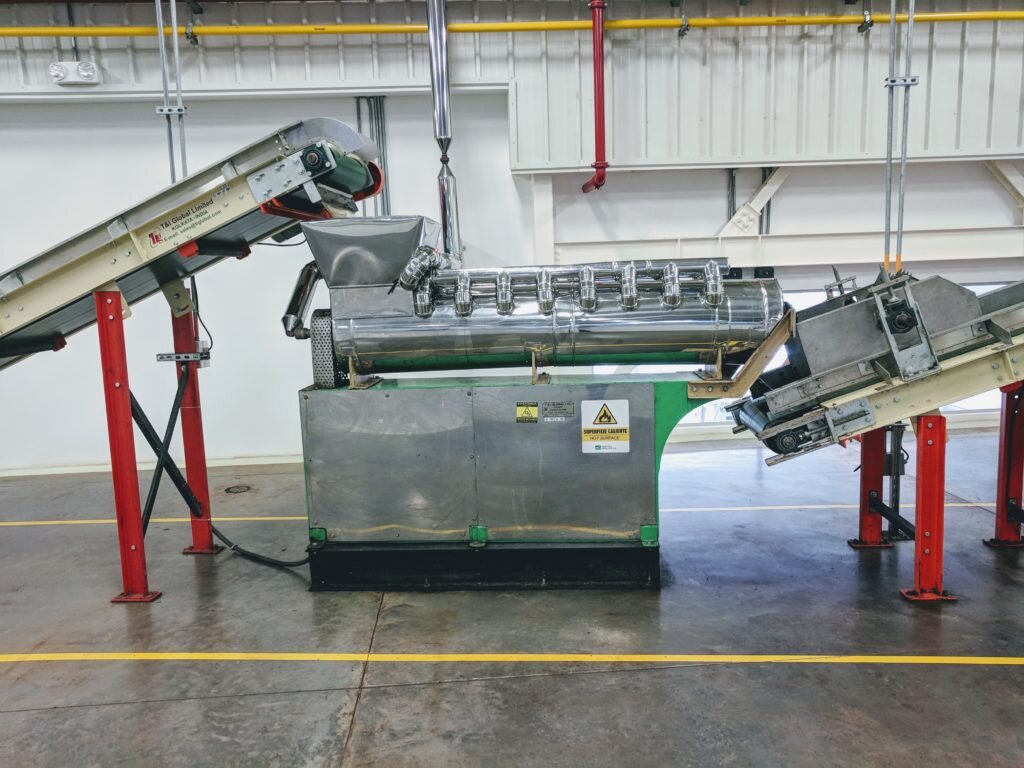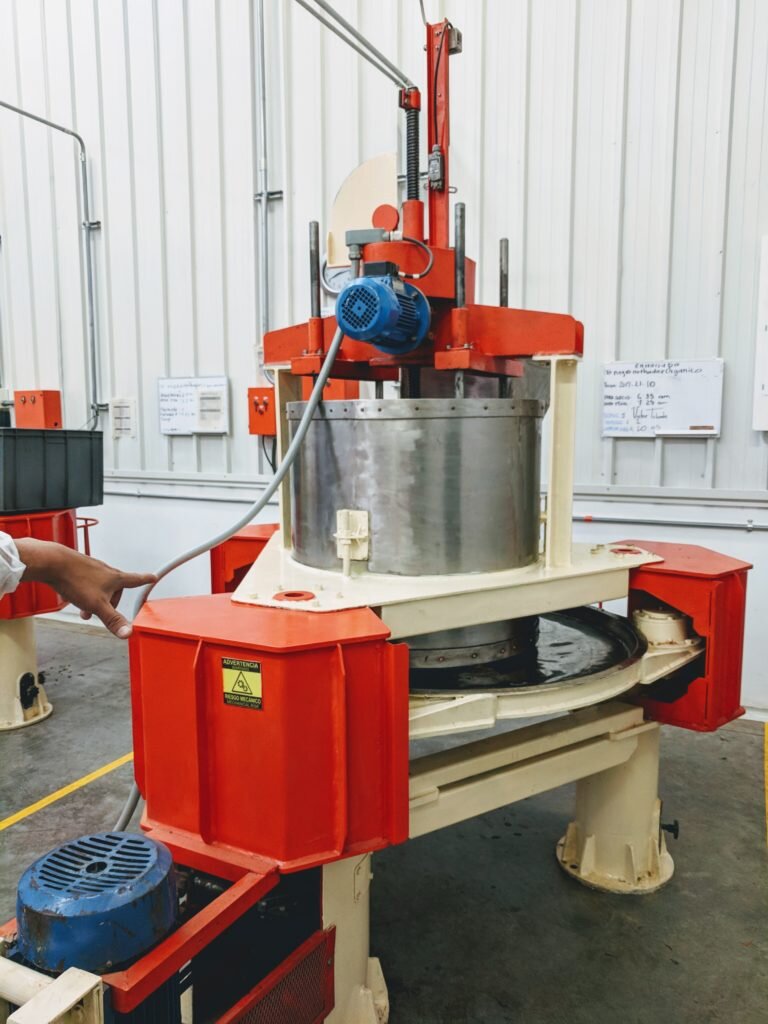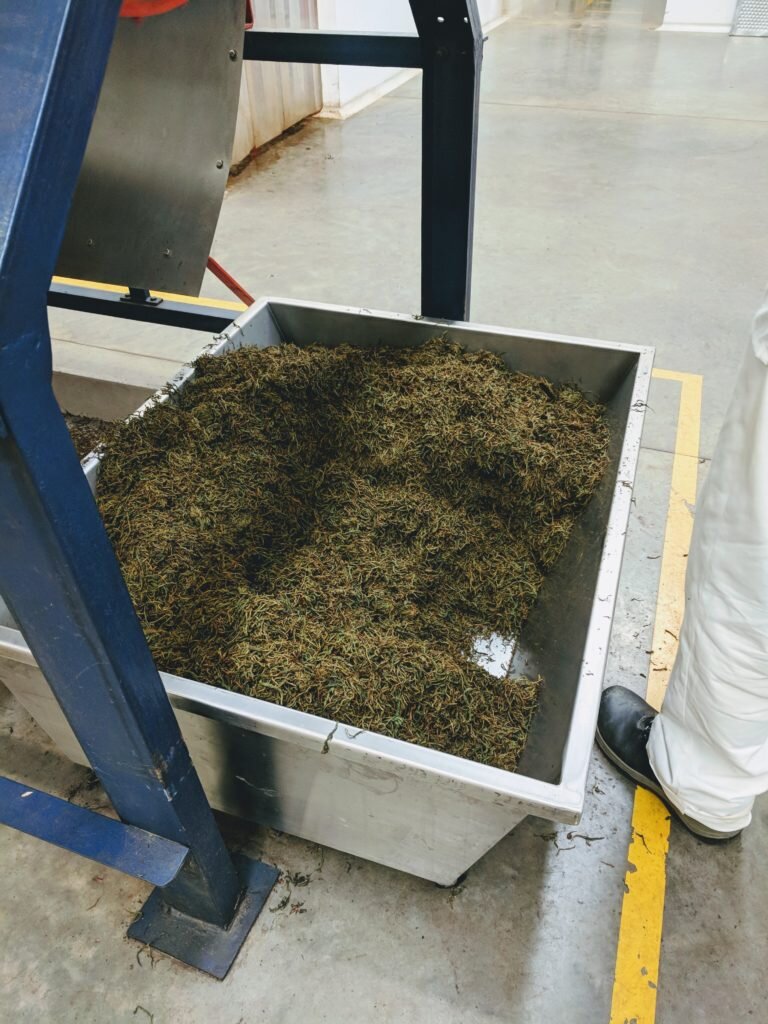Processing Methods in Colombia
This is an expanded section of a larger article detailing tea growing in Colombia and my travels there. You can read the full article here.
“Little Gem”
In addition to owning their tea garden, Bitaco has built a brand new, state-of-the-art tea processing plant outfitted with equipment purchased from India and organized specifically for the purposes of making top quality tea. It's perhaps the most modern tea processing facility in the Americas. Below is an in-depth, detailed account of how they process their black and green tea.
They still processed some tea in their older Hindú facility, just down the road, but much of it was now herbal tea processing. As a symbol of their history, one of the original rolling tables from 55 years ago is enshrined out in front of the building, dubbed “Little Gem”.
I was given a tour of the facility by Carlos Astaiza, the Director of Operations. The currently produce tea on 55 hectares of land, but they’ve built the facility to easily accommodate 80 hectares of tea, a goal they believe they will reach in another 5 - 8 years. This translates into a potential functional capacity of 150kg in finished tea a day. Almost all of the tea Bitaco produces is black tea. They only produce green tea to order at the moment, or to experiment and refine their techniques.
Room 1
Withering & Green Tea Line
This room is a large withering chamber, also housing their steam-processing machine. They have seven large withering troughs connected to furnaces with large turbines that push the hot air up through filtered screens on which the tea is piled. Additional large fans on the far end of the room pull the hot air out, thus creating a circle of air so the tea can be kept consistent. The tea will wither anywhere from 16 to 24 hours depending on the ambient temperature and humidity. On average, they wither for 18 hours and the point is to get the leaf to 60% moisture content so that it’s prime for the next steps in the process.
The steam machine is a simple conveyor belt with a boiler. They’ve currently adjusted it to subject the tea to steam at around 120º C (248º F) fro 30 seconds. After withering, green tea would go directly into the steam.
Room 2
Rolling & Separation
This large room houses their rolling machines, tumblers, and sorting tables. Both black and green tea go onto the rolling table (green first undergoes a drying phase due to the steaming). These large automated rolling tables consist of a table and a top plate, both with large grooves to catch and pull the leaf, and a motor the moves the top plate rhythmically in circles across the table. They’ve developed a program that works best for them, but generally, you are adjusting the pressure of the top plate on the table on the leaf, and the amount of leaf you put into the machine at once. This first rolling generally lasts 50 minutes.
They’ve developed a sorting process that determines what standard of quality they’re at and what determines the next steps. An all-important determinant factor is what they call finos, or “fines”, and what we might call “tips”. After the initial run through the rolling machine, they run the leaves through a “roller-breaker”, essentially a rotating tube with a mesh screen which acts as a leaf sorter that separates smaller finos from the larger leaves. If the batch is 70% or more finos, then it goes on to the next stage. If it’s 60 - 70%, which at times can be a large portion, then it undergoes another stage of rolling, this time with higher pressure for about 40 minutes. That batch then goes through the roller-breaker again. And if there is leaf still below 60%, they don’t use it for Bitaco tea at all, it’s utilized for Hindú teas. By the end of this stage, the leaves have developed a light coppery green hue and are intensely fragrant.
Room 3
Oxidation
This room serves as the oxidation chamber for black tea. Basically, it’s a warm, steamy room with another conveyor belt machine, usually referred to as a CFM (Continuous Fermentation Machine). The leaves are piled in one end, and a series of arms spread the tea into a uniform layer, to oxidize evenly. Above, a heater, fan, and mister kept the room at a consistent relative humidity, usually around 95%. The tea usually spends around 40 minutes on the conveyor, during which they transform from coppery to full chocolatey brown. At the end of the conveyor belt, the leaves fall onto another belt, leading into the final room.
Room 4
Firing
The firing chamber is where the tea is finished. The belt from the oxidation room carries the leaves into a large, 3-layered oven, each layer with its own belt and temperature control. In the oven, the different layers are stacked on top of one another, so at the end of each layer, the leaves fall into the next layer. This, combined with perforated trays and bursts of compressed air, keep the tea rotating constantly and make sure it doesn’t overcook on any one side or get too hot in the process. For both black and green tea, the final firing part will take around 16 - 20 minutes and the temperature usually ranges from 85º - 95º C (185º - 203º F). If the tea being processed is from the 60-70% finos batch that underwent a second rolling, then they use a slightly higher temperature to finish, from 95º - 105º C (203 - 221º F). At the end, the oven has yet another conveyor belt which carries the finished tea back into the second room.
Back to Room 2
Sorting
Back in this large room, the finished tea goes onto a vibrating sorting table, (sometimes referred to as a Myddleton, a brand/style of sorting table). Two mesh trays of different sized perforations shake back and forth, separating stems and leaves. The sorted leaves then go into a hexagonal tumbler outfitted with mesh trays with different size holes. As the tea tumbles down the hexagonal tube, the leaf passes through the mesh, which separates the tea into their respective categories. Leaf of the smallest grade gets re-sorted into even finer categories for Hindú on another vibrating sorting table. The tea is then weighed, packaged, and shipped out from here.
* Photos by author.
To read more on Colombian tea, check out the expanded articles:













